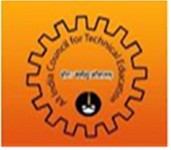Clinical Data Manager (Sr. Data Analyst/ Team Lead)
Designation: Clinical Data Manager (Sr. Data Analyst/ Team Lead)
Location: Mumbai (Airoli/ Powai)
RESPONSIBILITES:
* Experienced in Test Script and UAT
* Experienced in Discrepancy Management.
* SAE reconciliation and External data management
* has contributed to database lock, data tracking and reporting
* Experience in RAVE / Inform/ Oracle Clinical
* Clinical Data Management with Set up Experience is mandatory.(Example:
 Seeting up discrepancy procedures to check for inconsistencies in the data and setting up Data Management Plan for smooth Data Management activity.
 Setting up project specific guidelines for entering data into the database.)
Eligibility Criteria:
Experience: 2- 5 years
Qualification: Prefer Life sciences graduate/post graduate
Salary not a constraint for eligible candidates.
If you are interested in the above role please share your updated resume on [email protected] or call at 080-49075109




